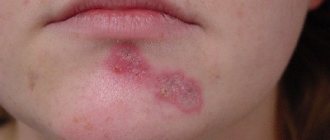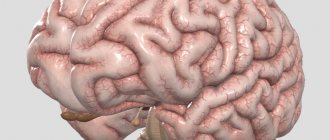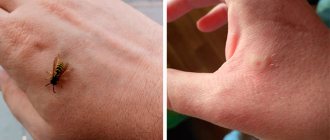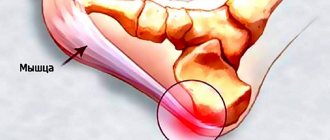It is allergies, as a disease, that can be called the real scourge of our century. Almost half of the world's population suffers from one type or another. Nowadays, danger can come not only from well-known allergens such as pollen, wool and dust, but also from previously completely safe things.
One of them is sun allergy. Sunlight, especially in summer, when it is at its most intense, can cause a special reaction in the human body.
That is why, before you go on vacation to the beach, you should find out how you can cure all the symptoms of photodermatitis, popularly known as sun allergy.
Risk factors
Many experts claim that the sun's rays act as an allergen. But it is not so. Allergy to the sun occurs when photosensitizers influence the human body. These are components that increase skin sensitivity to UV radiation. Under the influence of these rays, free radicals are released, which come into contact with proteins. The result of this process is the formation of new compounds. The newly formed substances serve as antigens leading to an allergic reaction.
Taking into account the type of photosensitizers, the following causes of sun allergies are distinguished:
- use of external medications;
- exposure to household chemicals on the skin;
- a certain group of cosmetics;
- The causes of allergies from the sun may be hidden in the influence of plant juices: hogweed, some meadow grasses.
In addition, the reasons contributing to sun allergies may be the accumulation of specific components in the body. The main reasons for this accumulation are the following:
- metabolic disorders: diabetes, excess weight;
- diseases of organs and systems whose work is reduced to removing toxic substances from the body: cirrhosis of the liver, chronic hepatitis, insufficient kidney function, constipation;
- systemic drug therapy.
Allergy to the sun is a disease that affects adults most of all with a light skin tone and a hereditary predisposition. The risk group is completed by:
- women during pregnancy;
- people who frequently visit the solarium.
What influences the development of pathology
The development of photodermatosis, or sun rash, is associated with exogenous (external) or endogenous (internal) causes. There are certain substances that, when exposed to ultraviolet radiation, increase photosensitivity of the skin and lead to the appearance of red allergic spots or small blisters. The main sources of dangerous components that can provoke irritation of the epithelium are :
- Cosmetic decorative or care products containing para-aminobenzoic, salicylic or boric acid, eosin, phenols, vitamin A (retinol). Of the natural ingredients in the composition, you should avoid parsley or dill juice, as well as essential oils (rose, musk or sandalwood).
- Pharmacological products. Skin sensitivity to UV rays increases as a result of taking sulfonamides, diuretics, barbiturates, some antihistamines and heart medications, and antibiotics containing tetracycline.
- Salon procedures that affect the skin and weaken the protective properties of the epithelium (scrubbing, peeling, tattooing, solarium).
- Foods consumed before going out into the sun (citrus fruits, figs, alcoholic drinks, spicy foods, as well as foods containing preservatives or flavor enhancers).
- Flowering plants secrete special substances (furanocoumarins/furocoumarins) that fall on exposed areas of the body and, under ultraviolet radiation, lead to the formation of a rash.
At risk are people with vitamin deficiency, impaired metabolism, problems with the functioning of the liver or gastrointestinal tract. Increased photosensitivity is observed in adolescents and pregnant women during the period of hormonal changes in the body, as well as in patients with weakened immunity due to illness.
First signs
Some people with individual sensitivity to sun rays suffer when the sun first appears, but, as a rule, the first symptoms appear 18-72 hours after exposure to the sun.
Local manifestations include:
- hyperemia of the skin;
- burning and itching of skin areas;
- the appearance of blisters filled with colorless liquid;
- swelling of the affected areas.
Other symptoms:
- increased body temperature;
- headache;
- decreased blood pressure;
- dizziness and fainting.
Causes
People whose skin belongs to the Celtic type are most susceptible to the disease. One of the reasons may be heredity. It is safe to say that a person with allergies suffers from liver dysfunction. This organ is a kind of filter for our body, and its improper functioning causes various malfunctions. The following substances can also act as provocateurs:
| Hygiene products |
|
| Cosmetical tools |
|
| Sunscreens |
|
| Nutritional supplements |
|
| Household chemicals |
|
Often medications provoke allergies:
- Antibiotics (macrolides, tetracyclines, antimycotics);
- Oral contraceptives and hormonal drugs;
- Non-steroidal anti-inflammatory drugs;
- Cardiac drugs;
- Corticosteroids.
Allergies to sunlight can be caused by a large number of flowers and plants, both domestic and wild.
After contact with them and exposure to the sun, patients notice a rash on their face in the form of large red spots, severe itching and burning. Such plants include: nettle, quinoa, ash, buttercup, St. John's wort, clover, sedge.
Some foods are considered good triggers for this type of allergy. Before going out into the sun, consuming these products is prohibited:
|
|
|
Symptoms of sun allergy
In most cases, photodermatitis develops after short-term exposure to direct sunlight. Sometimes clinical signs of the disease are found in people exposed to other ultraviolet radiation, for example, sunbathing in a solarium.
Now a few words about how sun allergy manifests itself. First of all, redness and swelling appear in the irradiated areas of the skin (in particularly advanced cases, Quincke's edema may appear), accompanied by a burning sensation and severe itching. Subsequently, the patient’s body becomes covered with multiple urticaria-type rashes that can spread to skin that has not been exposed to UV rays. An allergic reaction may be accompanied by a general deterioration in health, the development of conjunctivitis or cheilitis.
Under normal conditions, the rashes disappear on their own within 20 days, but upon repeated exposure to radiation they appear again. If left untreated, photodermatitis becomes chronic quite quickly, and its clinical picture is complemented by dryness and infiltration of the skin, increased pattern on the skin, the appearance of spider veins and hyperpigmentation.
Diagnosis of the disease
In general, identifying a sun allergy is quite easy. However, at the first manifestations of the disease or even suspicion of it, it is best to consult a doctor so that he can make an accurate diagnosis.
Photodermatitis can become a provoking factor that will lead to the formation of more serious problems, such as skin cancer.
Diagnosis is made based on anamnesis. An allergist may order a series of laboratory or clinical tests to rule out other diseases and see the history of symptoms.
What to do - first aid
If an allergy to the sun manifests itself in a severe form such as anaphylactic shock, you need to call an ambulance. In addition, the following measures are being taken:
- move the patient to the shade;
- give plenty of fluids to eliminate symptoms of dehydration: mineral water, sweet tea, compote;
- Apply a cold compress to the affected areas;
- give the person an antihistamine to drink.
When the temperature rises, antipyretic drugs are used. Allergy to the sun sometimes leads to vomiting, so the victim needs to be placed on his side. This will prevent vomit from entering the respiratory system.
First aid for fainting
If a person with ultraviolet radiation intolerance spends a long time in the open sun, his blood pressure often drops and faints.
Usually this happens suddenly and unexpectedly for him, so only other people can help in this case.
In order to help a person come to his senses, you need to take the following actions:
- move it to the shade, or create an artificial shelter over it;
- raise your legs, thereby increasing blood flow to the head;
- sprinkle cool water on the face, neck, chest;
- It is advisable to bring a cotton swab soaked in ammonia to your nose.
Most often, after these events the patient comes to his senses. But if fainting lasts a long time, or it occurs in a child or pregnant woman, you should call an ambulance. There are situations when a person must stay in the hospital for a couple of hours.
Treatment of sun allergies
There is no universal cure for sun allergies. In therapy, it is important to take an individual approach. How to treat a sun allergy will depend on the location of the inflammation on the skin, the severity of the rash and the presence of general symptoms.
In most cases, the treatment program includes the following components:
- Non-hormonal creams and ointments for external use: fenistil gel, desitin, etc.
- Corticosteroid drugs: prescribed for severe forms of photodermatitis and only as prescribed by a doctor.
- Ointments based on zinc, methyluracil, hydrocortisone.
- Antihistamines: Suprastin, Tavegil, Erius, Cetrin and others (see allergy tablets of the latest generation).
- Vitamin therapy, immunotherapy: the doctor prescribes immunostimulating drugs that will help strengthen the body’s defense reactions.
- Enterosorbents: Polysorb MP, Polyphepan, Enterosgel. Helps quickly cleanse the body of toxins and allergens.
- To restore liver function, the doctor prescribes hepatoprotectors: “Karsil”, “Glutargin”, “Silibor”, Gepabene” and other herbal preparations.
Treatment for sun allergies on the hands or face depends on the specific type of allergic reaction. In mild cases, simply avoiding the sun for a few days may be enough to relieve symptoms.
Why do allergies develop?
According to medical statistics, the number of reported cases of sun allergies is increasing every year. Note that sun allergy does not necessarily occur in a chronic form. Perhaps, after treatment is prescribed, the allergy symptoms will disappear and you will never be bothered again.
The sun's rays themselves are not allergens, but they can lead to the accumulation of substances in the human body that cause an allergic reaction.
Sun allergies are often observed in young children, since their immune system is not yet able to cope with the load placed on the body.
In general, all causes of sun allergies can be divided into two groups.
Internal reasons
Allergies to sunlight can contribute to liver disease, disorders of the digestive tract, and malfunctions of the immune system. It is noted that with the correction of metabolic processes, normalization of the liver and immune system, and replenishment of the deficiency of vitamins and microelements, the severity of the disease is noticeably reduced until it disappears completely.
External reasons
These include cosmetics, perfumes and local medicinal products that increase the body's sensitivity to sunlight. It is known that sensitivity to the sun is also increased by antimicrobial and diuretic drugs. Naturally, much depends on the length of time a person spends under the sun.
Before using any cosmetic or medicinal product, carefully read the instructions for it. If the instructions indicate that the drug can cause photodermatitis, then you should minimize your exposure to sunlight. When choosing cosmetics, pay special attention to the content of substances such as boric acid, mercury compounds, essential oils, and eosin. These components increase the severity of the disease.
The most striking example of external (or exogenous) photodermatitis is meadow dermatitis, which develops in response to the flowering of meadow plants in the summer. The substances furocoumarins contained in such plants in combination with ultraviolet radiation can cause an allergic reaction on the skin. Photodermatitis is often caused by certain drugs, for example, sulfonamides, aminazine, barbiturates, antihistamines, some non-steroidal anti-inflammatory drugs, oral contraceptives, antibiotics and others. In addition, one should take into account the fact that sun allergies most often occur at a time when the skin is weakened by some additional influence, for example, tattooing or peeling.
Sun allergy pills
To get rid of the symptoms of ultraviolet allergy, third and fourth generation antihistamines are prescribed. These tablets, unlike older analogues, are considered safer for the body and have fewer side effects. This line of products block histamine receptors, thereby eliminating the inflammatory process and accompanying symptoms: itching, rashes, etc.
What drugs are most often used to treat sun allergies:
Zodak
Available in drops and tablets for oral administration. Belongs to the third generation of antihistamines. Zodak has the same effect on the body as Cetirizine, since both drugs have the same active ingredient.
The drug can be purchased without a prescription at a price of 200 rubles. per package. In the form of drops, the medication can be used to treat children from 6 months. The dose is 2.5 mg daily. For adults, taking 1 tablet is recommended. per day. The course of treatment is 3–5 days. The drug is contraindicated during pregnancy and lactation.
Cetirizine
Belongs to the third generation of antihistamines. Cetirizine helps relieve hives and itching that accompany sun allergies. The medicine can be purchased without a prescription at a price of 70 rubles. per package.
Can be used for the treatment of children from 2 years of age. It is not recommended to take the drug during pregnancy and breastfeeding. The average dosage is 1 tablet per day. For children under 12 years of age, half the dose is prescribed. For sun allergies, the course of treatment often does not exceed 3 days. Cetirizine is not recommended to be combined with alcohol.
Tavegil
It belongs to the third generation drugs and is available in tablet form.
The medicine is not used during pregnancy and breastfeeding. The drug can be purchased from 159 rubles. per package. The medicine is indicated for children from 6 years old, 1/2, and for adults, 1 tablet per day. The course of treatment is individual (from 3 to 7 days). The medication can be purchased without a prescription.
Suprastinex
Available in two forms: drops and tablets. Refers to fourth generation drugs. Unlike Suprastin, it does not cause drowsiness and is effective throughout the entire course of therapy.
The cost of the drug starts from 300 rubles. For the treatment of children under 6 years of age, the medicine is used in the form of drops, with a dose of 1.25 mg 2 times a day. For adults, there are tablets that need to be taken 1 piece at a time. in a day. The course of treatment for allergies to ultraviolet radiation is from 3 to 7 days. The drug can be purchased without a prescription. During pregnancy and lactation, the medication is contraindicated.
Antihistamines do not eliminate the cause of sun allergy, but only relieve symptoms. To completely cure the disease, it is important to identify the provoking factor (for example, taking antibiotics, hormones, gastrointestinal pathologies, etc.) and eliminate it.
Treatment of sun allergies in adults
There is no single universal remedy for the treatment of sun allergies, so the doctor usually prescribes an individual, comprehensive approach, completely dependent on the symptoms that appear.
The first step in treating allergies is to get rid of the symptoms, so you should pay attention to the products and medications that are in use. However, in addition to this, there are a number of medications that can combat the manifestations of photodermatitis.
Hormonal ointments
This type of ointment is highly effective. A good result can be achieved in just a couple of hours, but long-term use of the product is completely excluded due to a long list of contraindications and side effects.
The most prescribed hormonal ointments for sun allergies:
- Dermovate is a class of corticosteroids that can quickly cure inflammation, swelling and heal wounds. Penetrating into the blood, the ointment helps eliminate allergies. The use of Dermovate, like any hormonal ointment, is permitted only as prescribed by a doctor, since the drug cannot be used for skin disorders, acne, rosacea and many other diseases. People with kidney and liver problems should be treated with special care. The ointment should be applied to the skin in a very thin layer a maximum of 2 times a day. The treatment time is prescribed by the doctor, but it is better not to exceed 7 days. It cannot be used in the first trimester of pregnancy, and even after that it is undesirable. Price - about 600 rubles ;
- Fluorocort - ointment is considered an effective anti-inflammatory, anti-allergic agent with the ability to get rid of itching. Do not use for acne, diaper rash, open wounds and infectious diseases of the dermis. You need to apply the ointment to the skin 2-3 times a day in a thin layer on the damaged parts. The amount of substance applied should not exceed 15 grams. The maximum time for using Fluorocort is 10 days; if the period is exceeded, there is a high risk of complications. Can be applied to a bandage for increased effectiveness. During pregnancy, it is prescribed only as prescribed by a doctor due to the large number of disadvantages. Price - about 300 rubles ;
- Flucinar - created to get rid of inflammation and itching. Good keratolytic and vasoconstrictor effect. This glucocosteroid, entering the body, goes through a complex process, not only healing the affected area, but also exfoliating the affected area. The ointment should not be used up to 2 years of age, in the presence of skin infections, tuberculosis, syphilis and after the administration of vaccines. It should be applied only once a day, the maximum period of use is two weeks. If the treatment lasted more than a week, then the body needs to be weaned off the ointment gradually. During pregnancy and lactation, it is best to avoid the drug, since clinical trials have not been conducted. Price - about 250 rubles .
Dermovate
Fluorocort
Flucinar
Non-hormonal ointments
These ointments are considered an absolutely safe method for treating sun allergies. Their gentle action allows you to get rid of contraindications, so they are allowed even at a young age and for a long period of time.
The most effective non-hormonal ointments for sun allergies:
- Panthenol is an effective remedy for the treatment of completely different skin lesions, especially sunburn and photodermatitis. The ointment actively stimulates the natural reaction, while eliminating inflammation. It is applied to the body 2-4 times a day in a fairly thin layer on the skin, previously treated with an antiseptic. You can use it until all symptoms are completely eliminated, discarding only if you are hypersensitive to the components. Can be used during pregnancy and breastfeeding, as it replenishes the missing element in the body - panthenol. Price - about 160 rubles ;
- Fenistil gel - once in the blood, the active substance blocks histamines, which helps get rid of allergies and itching. When applied, in addition to reducing irritation, it has an analgesic effect. Cannot be used for asthma and glaucoma, as well as in the first trimester of pregnancy, use is allowed from 1 month. The gel is applied to the damaged dermis 2 to 4 times a day, while avoiding exposure to ultraviolet radiation. Price - about 400 rubles ;
- Desitin is a thick ointment with a fairly specific aroma and has anti-inflammatory, adsorbent and antiseptic effects. The only contraindication for use is intolerance to the components included in the composition, which makes it safe for pregnant women and children. The ointment should be applied to the skin three times a day; if necessary, it can be covered with a bandage or bandages in case of burns. It is practically not absorbed into the blood, so there is no limitation on the duration of use. Average price 300 rubles .
Panthenol
Fenistil gel
Desitin
Preparations for internal use
To treat sun allergies at a deeper level, you should use medications.
Antihistamines
When the patient has completed all the tests to determine the cause of the allergy from a dermatologist and allergist, antihistamines are prescribed as standard for treatment.
Such as:
- Suprastin is an effective antihistamine and antiallergic agent. Do not use if you have arrhythmia, asthma, glaucoma, stomach ulcers and a number of other diseases. An adult should not consume more than 75 mg per day until symptoms are completely cured. Typically, the period of application does not exceed 7 days. It is not recommended for use by pregnant women, especially before childbirth and in the first trimester. Price - about 150 rubles ;
- Zyrtec is a 3rd generation drug that has a strong antihistamine effect. It relieves itching, swelling, and all skin manifestations of allergies. Do not use during pregnancy, renal failure or malabsorption. The standard dose of medication is half a tablet, taken once a day. You should drink it during meals. You should completely abstain from alcohol while taking it. Price - about 400 rubles ;
- Claritin blocks histamine receptors within 30 minutes and lasts for about a day. Cannot be used during lactation and for children under 12 years of age. The dosage of the drug is 10 mg per day; if you have liver and kidney diseases, you need to take a break every other day. Price - about 500 rubles .
Suprastin
Zyrtec
Claritin
Vitamin therapy
Quite often, if you are allergic to the sun, it is advisable to supplement your treatment with vitamin complexes containing vitamins A, E, C and B. Nicotinic acid is also desirable.
The most prescribed vitamin complexes:
- Alphabet is a multivitamin complex containing essential iron, biotin and vitamin A. In addition, a large amount of antioxidants effectively helps get rid of vitamin deficiencies. In total, the standard contains tablets of 3 different colors - you need to drink 1 of each per day. There is a complex for pregnant women that fully meets the needs of a woman in a delicate position. Price - about 300 rubles ;
- Centrum - helps enrich the body with vitamins A, E, C and many much-needed microelements. You need to drink 1 tablet a day, the standard course of treatment is at least a month, after which you need to take a temporary break. It should not be used if you have an intolerance to the components, as a complication of an allergic reaction may develop. Price - about 320 rubles ;
- Vitasharm is often used in the presence of skin diseases, allowing you to saturate the body with vitamins A and B. You need to drink it 1 tablet per day for a month. At the same time, the complex has an anti-inflammatory effect. It should not be used by pregnant women, those with kidney stones or pancreatitis. It is prescribed according to the doctor’s decision, since an allergic reaction as a side effect can lead to anaphylactic shock. Price - about 200 rubles .
Alphabet
class=”aligncenter” width=”688″ height=”538″[/img] Vitasharm
Enterosorbents
To quickly remove allergens and toxins from the body that have accumulated in it due to sun allergies, you should drink plenty of water and enterosorbets:
- Enterosgel is a preparation in the form of a paste or gel that effectively adsorbs all substances toxic to the body, including allergens. The drug is not absorbed into the blood, but it is not recommended for use in cases of intestinal obstruction or atony. It should be used a couple of hours before or after meals with water. For 1 dose, you need about one and a half tablespoons of gel. Price - about 370 rubles ;
- Filtrum tablets are very effective for cleansing the body as an enterosorbent. Do not use for stomach and duodenal ulcers, intestinal atony. You should drink it an hour before meals, preferably in a crushed state. The normal dose at a time is 2-3 tablets. It is not prescribed during pregnancy, since the effect has been poorly studied. Price - about 100 rubles ;
- Polypephane - normalizes the functioning of the gastrointestinal tract, helping to detoxify and adsorb the body. It should not be used if you have constipation or gastritis; there are no restrictions during pregnancy, but use should be supervised. Used an hour before meals, the powder must first be completely dissolved in half a glass of water. The normal dose is calculated according to the formula from 0.5 to 1 g of the substance per 1 kg of the patient’s weight. The entire daily dose is divided into 3 doses. The average price is 150 rubles .
Enterosgel
Filtrum
Polypephane
Folk remedies
If it is impossible to immediately see a doctor, traditional medicine can come to the rescue to help ease skin damage.
The most effective of them:
- Vegetable lotions - grate potatoes or cucumbers, wrap the pulp in gauze and squeeze out the juice. It is an excellent skin emollient. For the lotion, soak a cotton swab in the juice and apply it to the damage as needed;
- Egg white compress - helps soothe the skin, relieve heat and regenerate the skin. The protein should be placed in the freezer to cool, then soak cotton wool in it and apply it to the skin. As soon as the mixture dries, you need to rinse it off with water and then apply the egg again;
- Herbal mint compress - helps remove inflammation and reduce pain. To create a decoction, you need to pour a spoonful of mint with a glass of boiling water, after which you need to leave everything for an hour, strain it and cool. A bandage is soaked in the decoction and applied to the inflammation at least 2 times a day.
The best non-hormonal ointments for sun allergies
When treating yourself, it is better to choose non-hormonal ointments for sun allergies on the skin of the face and body. They are also safe for children, have a complex effect, are quite effective and do not cause side effects. The best include Fenistil, Zinc ointment, Gistan.
Zinc-based ointment
This ointment is also called Zinc ointment, or the substance itself is part of other products. It should be applied 2-3 times a day directly to areas with severe signs of allergy.
The product does not spread well over the surface of the skin, has a dense structure, and can leave stains on the body and clothes. It is these ointments that have a quick effect, relieve itching and burning, and stop the inflammatory process.
You should not use antihistamines containing zinc in pediatric practice - the instructions indicate a restriction for children under 6 years of age. You need to be careful during pregnancy and breastfeeding - long-term therapy leads to the absorption of the main active substance into the blood, which can negatively affect the development of the fetus and the already born child.
Fenistil
The ointment is applied to the skin in a thin layer 3 times a day, then, as allergy symptoms disappear, the dosage is reduced to 1 time per day. The duration of the course of treatment is not limited, but the condition must be monitored in the first 7 days. If there is no positive dynamics, it is worth replacing the ointment.
Can be used during pregnancy in the 2nd-3rd trimester, in children over 6 months of age; chronic pathologies and dermatological diseases are not contraindicated.
Gistan
The safest antihistamine drug because it belongs to the latest generation of drugs. This ointment can be used for a long time, until complete recovery. Apply 3 times a day to problem areas. With long-term therapy, it can cause increased drowsiness, which disappears immediately after reducing the daily dosage.
Types of photodermatitis
There are the following types of allergic dermatitis due to sun exposure:
- Phototraumatic reaction. This reaction usually occurs in an absolutely healthy person. It is characterized by redness of the skin and a slight burning sensation. Often appear on the face and décolleté. You should simply refuse to stay in the sun when it is hot.
- Phototoxic reaction. This type of reaction occurs in people suffering from hypersensitive skin. It appears after taking certain medications or using cosmetics.
- Photoallergic reaction. Is a pathogenic reaction. Indicates that the patient has allergies. It appears in the form of a rash, blisters, redness, almost immediately after contact with the sun's rays.
The best hormonal ointments for sun allergies
All hormonal ointments are divided into classes:
| Drug category | Effect | Names |
| First | The effect is not pronounced, but is effective for minor manifestations of an allergic reaction. The first class includes hormonal ointments. | Hydrocortisone, Prednisolone |
| Second | The effectiveness of the drugs is more pronounced, they quickly relieve itching and burning and help in cases where first-class ointments are powerless. | Afloderm, Cinacort and Fluorocort |
| Third | They have an immediate anti-inflammatory effect and are used for chronic eczema and allergic dermatosis, which have been troubling for a long time and cannot be treated with other drugs. The third class includes hormonal ointments. | Elokom, Advantan and Apulein |
| Fourth | They have the highest activity and are used only if the skin lesions are too intense, critical, and no other drugs have the desired effect. | Galcinonide, Dermovate |
Fluorocort
The ointment is most effective in cases of moderate severity of allergies, when there are no extensive and deep skin lesions, but the inflammatory process is rapidly developing. Since it does not act instantly, it is applied in a thin layer to the affected areas 2-3 times a day. There is no need to rub or massage, the drug is perfectly absorbed and does not dry out the skin.
The duration of the course of therapy is 5 days; if there is no positive dynamics after 2-3 days of treatment, then you need to seek help from a doctor - perhaps the diagnosis was incorrectly made, or another drug is needed.
Fluorocort is contraindicated for use in case of existing dermatological diseases; it is not used in pediatric practice or to alleviate the condition of pregnant and lactating women.
Dermovate
Apply the ointment once a day directly to the site of the allergy in a thin layer. It must be gently rubbed into the epidermis and wait until it is completely absorbed, after which the surface is treated with any moisturizing or nourishing cream. If the allergic reaction is too severe, then two similar procedures are allowed on the first day.
Duration of use is a maximum of 5 days; if there is no improvement within 2-3 days, then you need to seek help from a doctor. If there is a noticeable improvement in the condition of the skin, you should immediately replace the ointment with a lower grade.
Contraindicated for use in pregnant and lactating women, children under 1 year of age, in the presence of severe itching without significant signs of inflammation of the skin.
Elokom
It is not advisable to use the ointment to treat allergies with symptoms on the face; under no circumstances should the area around the eyes be treated. It is recommended for use when the intensity of the disease manifestations is low; it is applied to the skin once a day in a thin layer, absorbs independently and leaves no traces.
Since Elokom is considered a first-class drug, it can be used for treatment for a long time, until the desired effect is achieved. The ointment has many contraindications; it is not used during pregnancy, breastfeeding, or in childhood (up to 3 years). Too large lesions are not treated, because there is a risk of the hormonal component entering the bloodstream.
Anti-inflammatory and healing ointments
These ointments are used to relieve severe signs of sun allergy. These include Nurofen, Diclofenac, Bepanten.
Bepanten
An excellent ointment that can be used to treat complex allergies accompanied by skin damage and sunburn.
Bepanten accelerates regeneration processes and improves metabolic processes at the cellular level. It is applied 3 times a day, the duration of the course of treatment is not limited, until the skin is completely restored.
The ointment is suitable for children (from 1 year), pregnant and lactating women. There are no contraindications, because the main active ingredients do not penetrate the bloodstream.
Diclofenac
Relieves swelling and local temperature increases, soothes damaged skin, and reduces the intensity of allergy symptoms. Can be used for 5 days, after which it should be replaced with a more gentle option.
Contraindications to the use of Diclofenac ointment: a history of bronchial asthma, severe urticaria, diseases of the gastrointestinal tract, children under 12 years of age.
Nurofen
An ointment whose main active ingredient is ibuprofen. It has pronounced anti-inflammatory and analgesic properties. Even with severe allergies, it relieves itching, burning and pain.
Therapy with the drug is carried out for 7-10 days, pathological areas are treated 2-3 times a day.
Folk remedies
To get rid of the symptoms of ultraviolet allergy, you can use the following folk remedies at home:
- Wormwood decoction. 3 tbsp. l. dry raw materials (leaves) pour 1 liter of water and cook for 30 minutes. Then leave for another hour and filter. Use to add to your bath when bathing every day for a week. This product perfectly eliminates itching and burning of the skin.
- Chamomile decoction. 2 tbsp. l. dry raw materials (flowers) need to be poured into 1 liter of water and cooked for 20 minutes. Then judge and filter the product. Soak gauze or bandage in the broth and apply to the affected area for 20 minutes. If the allergy has spread throughout the body, then it is recommended to dip a cotton pad into the resulting product and use it to wipe the rashes twice a day. The course of treatment is 10 days. Chamomile decoction has a pronounced anti-inflammatory effect.
- Sage tea. Produces antiseptic and anti-inflammatory effects. 1 tbsp. l. sage must be poured with 500 ml of boiling water. Leave to infuse for 2 hours. Then strain the liquid and use it to wipe the affected areas of the skin 3 times a day for a week.
It is important to understand that folk remedies are less effective than antihistamines and glucocorticosteroids, so herbal components are best used in complex therapy or for minor manifestations of allergies. The advantage of this method of treatment is safety and the absence of adverse reactions. It is not advisable to use traditional medicine recipes for the treatment of children under 1 year of age.
Allergy to the sun in a child - what to do?
Children's skin is sensitive, delicate, and their immunity is weak. It’s not for nothing that pediatricians advise waiting to travel to hot countries until your baby is older. Some parents take their one-year-old child with them, but it is better to wait until they are three years old. This will make it easier for your baby to withstand exposure to the sun.
Red curls, freckles, a white body are an indicator that the baby is prone to allergic reactions and will first develop an allergy to the sun. The child's shoulders, chest and face are most often affected: the skin turns red, rashes, blisters, itching and burning appear. Body temperature rises (37-38 C), runny nose and sneezing appear. Swelling of the mucous membranes appears around the mouth, nose, and eyes.
Only the attending physician can prescribe medications!
- Use cold compresses made from astringent substances: silver solution 0.25%, tannin solution 2%, and a compress made from anesthesin solution 2% to relieve pain.
- Panthenol cream foam helps, which quickly and effectively relieves pain and redness.
- Compresses made from infusion of calendula or chamomile are suitable.
- Antihistamines Loratadine and Tavegil help.
- Vitamin therapy using vitamins B, C, PP is no less effective.
In addition, creams and ointments that contain methyluracil or lanolin are used. Important to remember! Hormonal medications are contraindicated for children.
Prevention
For patients who want to prevent pathological reactions in the future, experts recommend the following prophylaxis:
- Time spent in direct sunlight should be minimized.
- Patients should constantly ensure that their skin does not dry out.
- Dermatologists do not recommend that their patients use cosmetics that contain fragrances. This is due to the fact that pigment spots may appear on their skin.
- If a person needs to be exposed to direct sunlight for a long period of time, then he should choose suitable clothing. It should have long sleeves and cover the epidermis as much as possible.
A special protective cream must be applied to exposed areas of the skin. For the best protective effect, apply the product half an hour before going out into the sun and then repeat every 2 hours. The cream is applied even on a cloudy day, because UV rays can be reflected and scattered. It is necessary to choose a product with a protection factor of SPF 50+. People prone to allergies and children should prefer creams based on mineral filters. They are the safest.
What to do for a sunburn: first aid and treatment Neurodermatitis: treatment with ointments, creams and medications Psoriasis: symptoms (photos), causes and treatment Trophic ulcer of the lower extremities: treatment, symptoms and photos
Classification
Ultraviolet rays with a certain wavelength excite immune cells (basophils), which are located deep in the skin. As a result, basophils explode when exposed to UV radiation.
This process activates the release of enzymes such as histamine, serotonin and others; they are elements of inflammatory compounds that are released into the thickness of the skin and cause an allergic reaction.
There are the following types of body reactions to sunlight:
- Phototraumatic is when a person receives sunburn on the skin. The reaction can occur both in people suffering from allergies and in completely healthy people. UV rays affect people differently at different times:
- in the first 15-20 minutes, warming and antidepressant effects occur, as well as the production of vitamin D;
- After 2 hours of exposure to the sun, sunburn, pigmentation, and decreased immunity may develop.
- Phototoxic is when the skin develops burns, blisters, or severe redness caused by certain medications or cosmetics, as well as certain foods. Medicine calls such substances photosensitizers. More often, women and children suffer from this type of reaction to solar radiation, as they constantly use cosmetics.
- Photoallergic is a specific reaction of the body to UV radiation. Immune cells go on the attack and the body begins to release substances that cause inflammation and swelling. Because of such a reaction, you can die if timely help is not provided. Such a response from the body can occur both in the first minutes of exposure to the sun and over several days.











